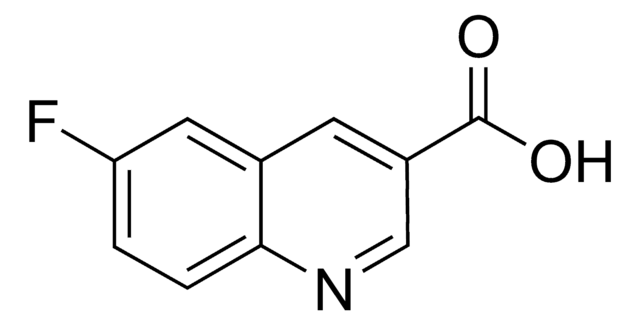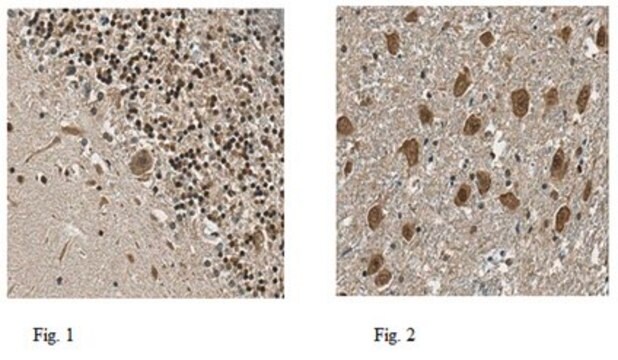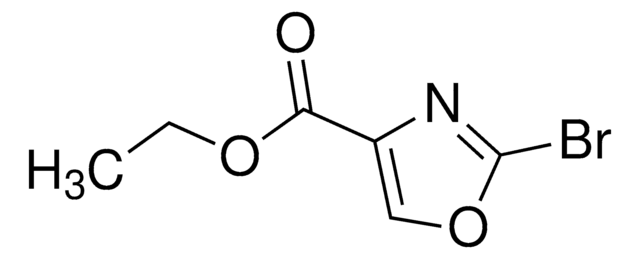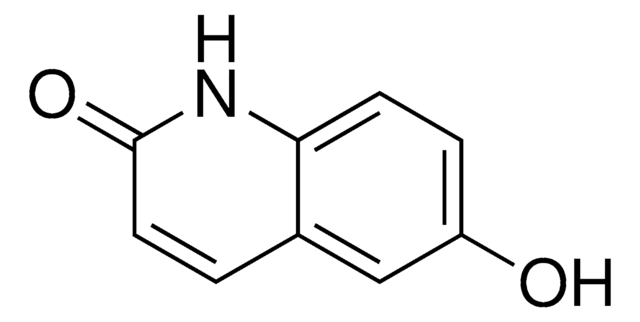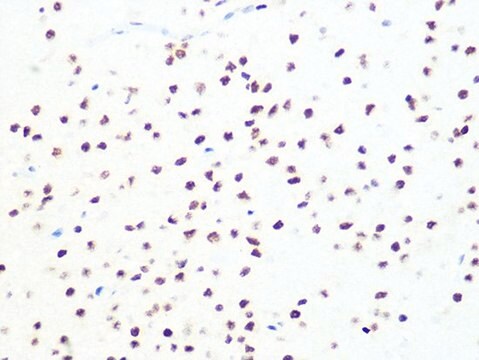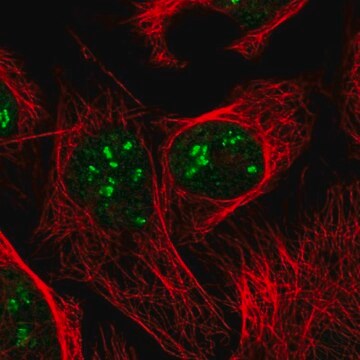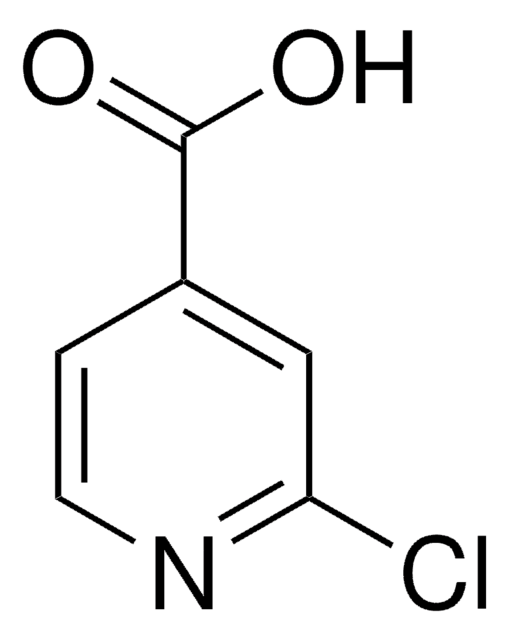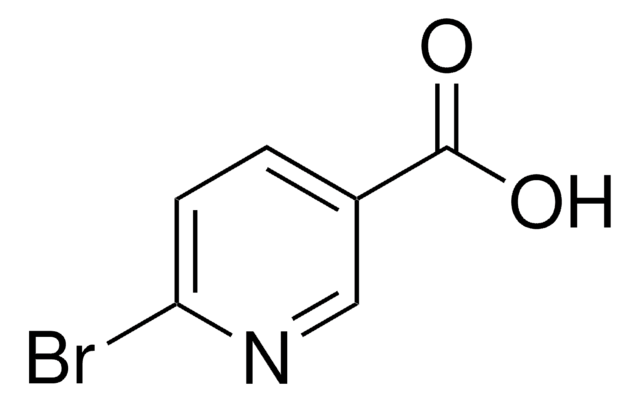ABE2587M
Anti-Dyskerin (Rabbit)
from rabbit, purified by affinity chromatography
Synonyme(s) :
H/ACA ribonucleoprotein complex subunit 4, CBF5 homolog, Nopp140-associated protein of 57 kDa, Nucleolar protein NAP57, Nucleolar protein family A member 4, snoRNP protein DKC1
About This Item
IP
WB
immunoprecipitation (IP): suitable
western blot: suitable
Produits recommandés
Source biologique
rabbit
Niveau de qualité
Forme d'anticorps
affinity isolated antibody
Type de produit anticorps
primary antibodies
Clone
polyclonal
Produit purifié par
affinity chromatography
Espèces réactives
human
Conditionnement
antibody small pack of 25 μL
Technique(s)
immunofluorescence: suitable
immunoprecipitation (IP): suitable
western blot: suitable
Isotype
IgG
Numéro d'accès UniProt
Modification post-traductionnelle de la cible
unmodified
Informations sur le gène
human ... DKC1(1736)
Description générale
Spécificité
Immunogène
Application
Epigenetics & Nuclear Function
Immunoprecipitation Analysis: A representative lot recovered Dyskerin associated with active telomerase in telomerase-overexpressing HEK293T cells (Courtesy of the laboratories of Dr. Hilda Pickett and Dr. Tracy Bryan, Children s Medical Research Institute, Australia).
Western Blotting Analysis: A representative lot detected Dyskerin in Western Blotting applications (O′Brien, R., et. al. (2016). Cancer Res. 76(12):3604-17).
Western Blotting Analysis: A representative lot detected Dyskerin in mid-S phase HEK293T cells. The signal depleted upon treatment with siRNA against Dyskerin. (Moye, A.L., et. al. (2015). Nat Commun. 6:7643).
Immunofluorescence Analysis: A representative lot detected Dyskerin in HeLa cells. (telomerase positive) (Courtesy of the laboratories of Dr. Hilda Pickett and Dr. Tracy Bryan, Children s Medical Research Institute, Australia).
Western Blotting Analysis: A representative lot detected Dyskerin in HEK293 Cell lysate. The signal was depleted upon treatment with siRNA against Dyskerin (Courtesy of the laboratories of Dr. Hilda Pickett and Dr. Tracy Bryan, Children s Medical Research Institute, Australia).
Qualité
Western Blotting Analysis: A 1:500 dilution of this antibody detected Dyskerin in 10 µg of SW480 cell lysate.
Description de la cible
Forme physique
Stockage et stabilité
Autres remarques
Clause de non-responsabilité
Vous ne trouvez pas le bon produit ?
Essayez notre Outil de sélection de produits.
Code de la classe de stockage
12 - Non Combustible Liquids
Classe de danger pour l'eau (WGK)
nwg
Point d'éclair (°F)
Not applicable
Point d'éclair (°C)
Not applicable
Certificats d'analyse (COA)
Recherchez un Certificats d'analyse (COA) en saisissant le numéro de lot du produit. Les numéros de lot figurent sur l'étiquette du produit après les mots "Lot" ou "Batch".
Déjà en possession de ce produit ?
Retrouvez la documentation relative aux produits que vous avez récemment achetés dans la Bibliothèque de documents.
Notre équipe de scientifiques dispose d'une expérience dans tous les secteurs de la recherche, notamment en sciences de la vie, science des matériaux, synthèse chimique, chromatographie, analyse et dans de nombreux autres domaines..
Contacter notre Service technique